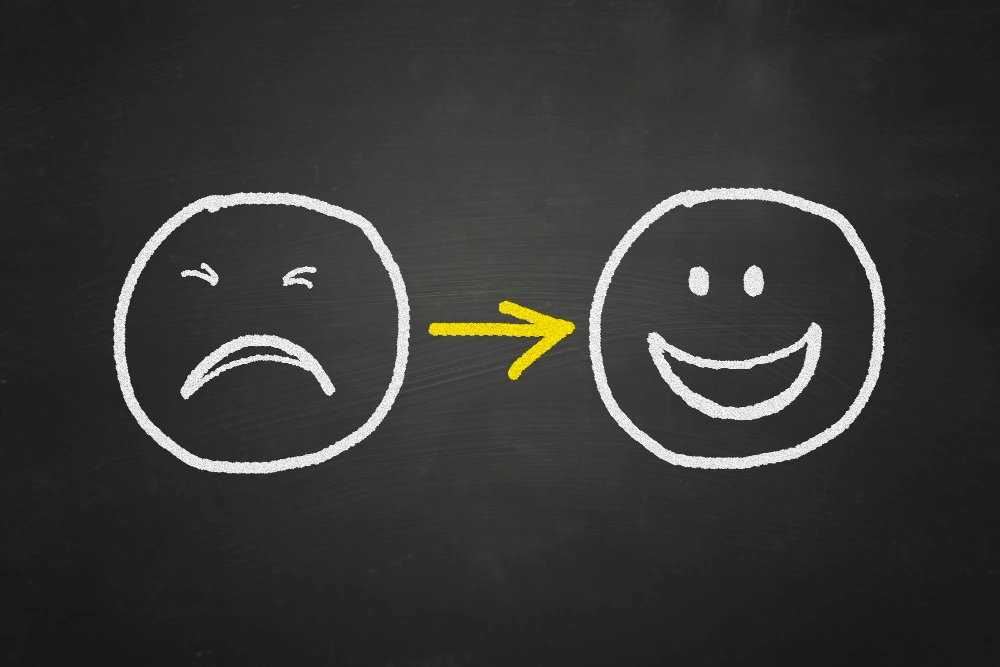Psychotic Disorders vs. Mood Disorders: What’s the Difference?

When discussing mental health, psychotic and mood disorders are two significant categories of mental illnesses. Both impact an individual’s thoughts, emotions, and behaviors, but they differ in their core symptoms and how they manifest. Understanding these differences is crucial for proper diagnosis and treatment. This post dives deeper into each category, exploring specific disorders, real-life examples, and statistical data on prevalence.
Page Contents
What Are Psychotic Disorders?
Psychotic disorders involve a loss of contact with reality, causing symptoms such as delusions, hallucinations, and disorganized thinking. Individuals experiencing psychosis may struggle to distinguish between what’s real and imagined, which can make daily functioning challenging. Schizophrenia, the most well-known psychotic disorder, affects about 1% of the global population
Schizophrenia typically manifests in late adolescence or early adulthood and can be severely disabling if untreated.
Schizophrenia: A Closer Look
Schizophrenia is characterized by:
- Delusions: False beliefs that are not based in reality, such as thinking someone is plotting against you.
- Hallucinations: Hearing voices or seeing things that are not present.
- Disorganized Speech and Behavior: Difficulty organizing thoughts, leading to incoherent speech and unpredictable actions
National Institute of Mental Health
For example, a person with schizophrenia might believe they are being watched or controlled by external forces. This delusional thinking can lead to social isolation and paranoia, making it difficult for the individual to maintain relationships or hold down a job.
Psychotic disorders often require long-term treatment, usually involving antipsychotic medications to manage symptoms. Antipsychotics help to reduce hallucinations and delusions, allowing individuals to engage more effectively with reality
In some cases, psychotherapy is used alongside medication to help individuals develop coping strategies and improve their quality of life.
What Are Mood Disorders?
Mood disorders primarily affect an individual’s emotional state, leading to prolonged episodes of depression or mania. Unlike psychotic disorders, mood disorders focus more on mood dysregulation, though severe cases may involve psychotic features. Some of the most common mood disorders include major depressive disorder (MDD) and bipolar disorder.
Major Depressive Disorder: A Closer Look
Major depressive disorder affects approximately 7% of adults in the United States each year
It is characterized by persistent feelings of sadness, hopelessness, and a loss of interest in activities once enjoyed. Symptoms must last for at least two weeks for a diagnosis of MDD, though episodes can last much longer if untreated. Physical symptoms like changes in appetite, sleep disturbances, and fatigue are also common
For instance, someone with MDD may experience overwhelming fatigue, difficulty concentrating, and frequent thoughts of death or suicide. These symptoms often interfere with daily functioning, making it hard for individuals to work, maintain relationships, or even carry out basic tasks like getting out of bed.
Bipolar Disorder: A Closer Look
Bipolar disorder, which affects about 2.6% of the U.S. adult population, involves intense mood swings ranging from depressive lows to manic highs
During manic episodes, individuals may feel excessively energetic, make impulsive decisions, and experience little need for sleep. However, during depressive episodes, they may exhibit typical signs of major depression.
In some cases, individuals with bipolar disorder may experience psychotic symptoms during severe manic or depressive episodes, blurring the line between mood and psychotic disorders. Treatment for bipolar disorder often involves mood stabilizers like lithium and antidepressants to manage the mood swings

Real-Life Scenario: Comparing Schizophrenia and Bipolar Disorder
Imagine two individuals: One is experiencing schizophrenia, where they hear voices that aren’t real and believe they are being monitored by the government. They struggle to maintain their job due to constant paranoia and difficulty focusing on tasks.
Another person has bipolar disorder and is in the midst of a manic episode. They feel invincible, make risky decisions like spending large sums of money, and believe they are destined for greatness. Weeks later, this same person might fall into a deep depression, feeling worthless and incapable of completing daily activities. Both individuals experience serious disruptions in their lives, but their conditions manifest in different ways.
Prevalence of Psychotic and Mood Disorders
According to the National Institute of Mental Health (NIMH), psychotic disorders like schizophrenia are less common, affecting about 1 in 100 people globally, whereas mood disorders like major depression and bipolar disorder affect a larger portion of the population
- Schizophrenia: Around 20 million people worldwide are affected, with men often showing symptoms earlier than women.
- Major Depression: This affects about 264 million people globally, making it one of the most common mental disorders.
- Bipolar Disorder: This disorder affects approximately 46 million people worldwide, with symptoms often emerging in early adulthood
National Institute of Mental Health
National Institute of Mental Health
Treatment Approaches
Psychotic disorders are primarily treated with antipsychotic medications to control symptoms like delusions and hallucinations. For example, medications like Risperidone and Clozapine help manage these symptoms, improving a patient’s ability to function in daily life
Cognitive-behavioral therapy (CBT) is often used in conjunction with medication to help individuals manage their thoughts and develop healthier coping mechanisms.
Mood disorders require a different treatment approach. Mood stabilizers, antidepressants, and psychotherapy are commonly used to manage bipolar disorder and depression. Cognitive-behavioral therapy (CBT) is highly effective for treating major depression, helping individuals recognize and change negative thought patterns.
Conclusion: Recognizing the Differences
While psychotic disorders and mood disorders share some similarities, particularly in severe cases, they impact individuals in distinct ways. Psychotic disorders disrupt a person’s sense of reality, while mood disorders affect emotional regulation and can lead to extreme mood shifts. Proper diagnosis and treatment are essential for managing both types of conditions effectively.
If you or a loved one are experiencing symptoms of either psychotic or mood disorders, seeking professional help is critical. At GloFusion Medical & Mental Care, we provide comprehensive treatment plans tailored to each individual’s needs. Book a consultation today to take the first step toward better mental health. Visit GloFusion Medical & Mental Care to learn more about our services and how we can help.
For further information about mood and psychotic disorders, check out the National Institute of Mental Health (NIMH) here.

